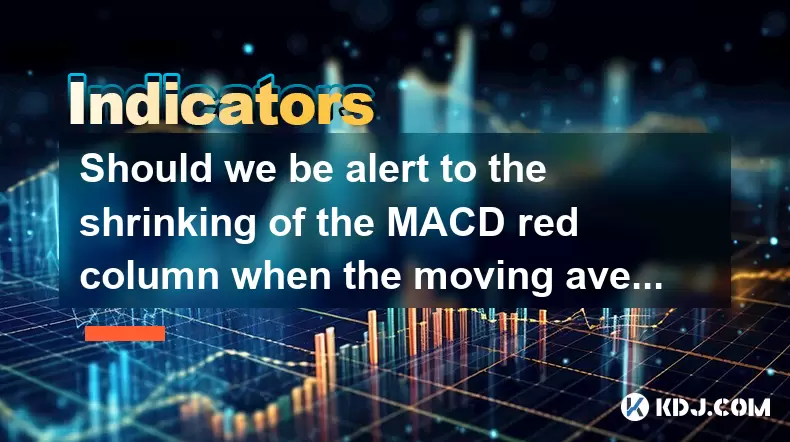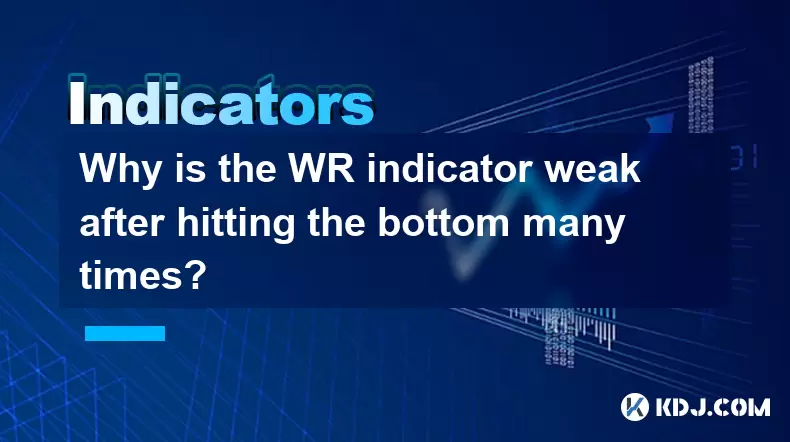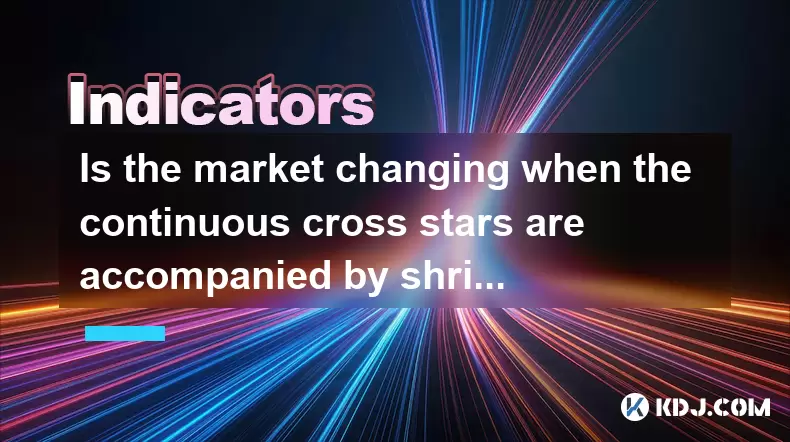-
 Bitcoin
Bitcoin $101,898.5005
-0.75% -
 Ethereum
Ethereum $2,258.1125
-1.07% -
 Tether USDt
Tether USDt $1.0004
0.01% -
 XRP
XRP $2.0178
-2.93% -
 BNB
BNB $624.0243
-1.53% -
 Solana
Solana $134.3298
-0.90% -
 USDC
USDC $0.9999
0.01% -
 TRON
TRON $0.2675
-2.05% -
 Dogecoin
Dogecoin $0.1538
-1.96% -
 Cardano
Cardano $0.5482
-1.11% -
 Hyperliquid
Hyperliquid $35.5636
5.45% -
 Bitcoin Cash
Bitcoin Cash $453.4902
-1.66% -
 Sui
Sui $2.5134
-2.97% -
 UNUS SED LEO
UNUS SED LEO $9.1292
1.77% -
 Chainlink
Chainlink $11.8457
-1.60% -
 Stellar
Stellar $0.2312
-2.73% -
 Avalanche
Avalanche $16.9721
0.29% -
 Toncoin
Toncoin $2.7549
-3.82% -
 Shiba Inu
Shiba Inu $0.0...01081
-1.10% -
 Litecoin
Litecoin $80.8250
-0.71% -
 Hedera
Hedera $0.1374
0.21% -
 Monero
Monero $305.4827
-2.36% -
 Ethena USDe
Ethena USDe $1.0006
0.00% -
 Dai
Dai $1.0000
-0.01% -
 Polkadot
Polkadot $3.2085
-3.12% -
 Bitget Token
Bitget Token $4.0845
-3.13% -
 Uniswap
Uniswap $6.3353
-1.63% -
 Pi
Pi $0.5085
-0.70% -
 Pepe
Pepe $0.0...08913
-3.82% -
 Aave
Aave $232.7090
-0.58%
How much volume is required for the W-bottom to break through the neckline of the time-sharing chart?
A W-bottom breakout on a time-sharing chart is more reliable when accompanied by a significant volume spike, confirming bullish reversal strength in volatile crypto markets.
Jun 23, 2025 at 04:21 pm

Understanding the W-Bottom Pattern in Cryptocurrency Trading
The W-bottom pattern is a popular technical analysis formation used by traders to identify potential bullish reversals. It typically appears at the end of a downtrend and resembles the letter "W" on price charts. In the context of cryptocurrency trading, where volatility is high and trends shift rapidly, recognizing this pattern can be crucial for making informed decisions.
A W-bottom consists of two distinct lows that are roughly equal, separated by a peak known as the reversal point. The neckline is drawn by connecting the highest point between the two lows. A valid breakout above this neckline often signals a strong reversal from a bearish to a bullish trend.
However, one critical question remains: How much volume is required for the W-bottom to break through the neckline on a time-sharing chart?
What Is a Time-Sharing Chart?
Before diving into volume requirements, it's essential to understand what a time-sharing chart refers to in cryptocurrency trading. This term usually describes intraday or short-term charts such as 1-minute, 5-minute, or 15-minute intervals. These charts are widely used by day traders and scalpers who rely on quick entries and exits based on short-lived patterns like the W-bottom.
On such charts, price movements are more sensitive to immediate buying or selling pressure, which makes volume spikes during key moments—like a neckline breakout—especially significant.
Key Components of a Valid W-Bottom Breakout
To determine whether a W-bottom breakout has validity, especially on time-sharing charts, several factors must align:
- Two clear lows forming the “W” shape
- A well-defined neckline connecting the intermediate high
- Volume contraction during the second dip, followed by a noticeable increase when price approaches and breaks the neckline
- A decisive close above the neckline, preferably with increased volume
Among these, volume confirmation is often overlooked but plays a vital role in validating the strength behind the breakout.
Volume Analysis During the Neckline Breakout
In traditional technical analysis, a breakout accompanied by higher-than-average volume increases the likelihood of the move being genuine rather than a false signal. On time-sharing charts, this principle still holds, although the interpretation may vary slightly due to the compressed nature of the data.
Here’s how to assess volume during a W-bottom breakout on a time-sharing chart:
- Compare current volume bars to the average volume over the past 20 periods (e.g., 20 five-minute candles if you're using a 5-minute chart). If the volume bar during the breakout candle exceeds this average significantly, it adds credibility to the move.
- Look for a sharp spike in volume exactly at or just after the breakout occurs. This indicates strong participation from buyers.
- Avoid breakouts with low or declining volume, as they may indicate lackluster interest and could result in a failed move.
It's also important to note that in fast-moving crypto markets, even small-cap coins can experience rapid volume surges. Therefore, volume should always be interpreted relative to the asset’s typical trading behavior.
Practical Steps to Confirm a W-Bottom Breakout Using Volume
If you're actively monitoring a W-bottom pattern on a time-sharing chart, follow these steps to confirm a valid breakout:
- Identify the neckline: Draw a horizontal or slightly sloping line across the high point between the two dips.
- Monitor volume during the second dip: A decrease in volume during this phase suggests selling pressure is weakening.
- Watch for increasing volume as price approaches the neckline: This hints at accumulation.
- Confirm the breakout candle closes above the neckline: Preferably with a large green candle and a notable volume spike.
- Check for a retest of the neckline: Sometimes, price pulls back to test support after breaking out. If volume remains strong during the retest, it can reinforce the validity of the pattern.
These steps apply specifically to time-sharing charts and require careful attention to detail, especially since false breakouts are common in volatile crypto environments.
Interpreting Volume Spikes Across Different Timeframes
While the focus here is on time-sharing charts, understanding how volume behaves across different timeframes can provide additional context:
- On a 1-minute chart, volume spikes may appear exaggerated due to the short duration. Traders need to filter noise by comparing with recent averages.
- On a 15-minute chart, volume tends to smooth out slightly, offering clearer signals for those seeking to validate W-bottoms within a few hours.
- Regardless of the timeframe, consistency in volume behavior around the breakout zone is key.
Traders should avoid relying solely on raw volume numbers. Instead, use tools like volume moving averages or volume profile indicators to better interpret whether the breakout has sufficient conviction.
Frequently Asked Questions (FAQ)
Q1: Can a W-bottom breakout be trusted without a volume spike?
Yes, but with caution. While volume is a strong confirming factor, some legitimate breakouts occur on lower volume, especially in less liquid or niche cryptocurrencies. However, such moves are riskier and may not sustain momentum.
Q2: Should I use other indicators alongside volume for W-bottom confirmation?
Absolutely. Combining volume analysis with oscillators like RSI or MACD can improve accuracy. For instance, a bullish divergence on the RSI during the second dip strengthens the case for a valid W-bottom.
Q3: How long should I wait after the breakout before entering a trade?
This depends on your strategy. Aggressive traders might enter immediately upon a confirmed breakout with volume. Conservative traders may wait for a successful retest of the neckline or a pullback before entering.
Q4: Is the W-bottom pattern equally reliable across all cryptocurrencies?
No. The reliability varies depending on market liquidity and overall trading activity. Major coins like Bitcoin or Ethereum tend to produce more trustworthy patterns compared to smaller altcoins, which are more prone to manipulation.
Disclaimer:info@kdj.com
The information provided is not trading advice. kdj.com does not assume any responsibility for any investments made based on the information provided in this article. Cryptocurrencies are highly volatile and it is highly recommended that you invest with caution after thorough research!
If you believe that the content used on this website infringes your copyright, please contact us immediately (info@kdj.com) and we will delete it promptly.
- DOGE Recovery Amid US-Iran Tensions: A Market Rollercoaster
- 2025-06-23 20:45:13
- Fiserv, PayPal, and Stablecoins: A New Era of Interoperability?
- 2025-06-23 20:45:13
- Shytoshi Kusama, SHIB Dev, and Alpha Layer: Decoding the Latest Developments
- 2025-06-23 20:25:12
- BTC, ETH, and Institutional Buying: Smart Money Piling In?
- 2025-06-23 20:25:12
- Sonic Boom or Market Gloom? Navigating Volatility with Sonic, SPX6900, and Crypto
- 2025-06-23 20:55:12
- Shakespeare Coin for Sale: Rare Find or Fool's Gold?
- 2025-06-23 20:55:12
Related knowledge

Does the second golden cross of MACD above the zero axis represent the continuation of strength?
Jun 23,2025 at 08:21pm
Understanding the MACD IndicatorThe Moving Average Convergence Divergence (MACD) is a widely used technical analysis tool in cryptocurrency trading. It consists of three main components: the MACD line, the signal line, and the histogram. The MACD line is calculated by subtracting the 26-period Exponential Moving Average (EMA) from the 12-period EMA. The...

Is it effective when the DIF line suddenly crosses the zero axis when the volume is shrinking and the market is trading sideways?
Jun 23,2025 at 07:29pm
Understanding the DIF Line in Technical AnalysisThe DIF line, or the Difference Line, is a critical component of the MACD (Moving Average Convergence Divergence) indicator, widely used in technical analysis across cryptocurrency and traditional financial markets. It represents the difference between the 12-period EMA (Exponential Moving Average) and the...

Should we be alert to the shrinking of the MACD red column when the moving average is arranged in a bullish pattern?
Jun 23,2025 at 08:14pm
Understanding the MACD Red Column and Its SignificanceThe Moving Average Convergence Divergence (MACD) is a widely used technical indicator in cryptocurrency trading. It consists of three main components: the MACD line, the signal line, and the MACD histogram (the red column). The red column represents the difference between the MACD line and the signal...

Why is the WR indicator weak after hitting the bottom many times?
Jun 23,2025 at 07:56pm
Understanding the WR Indicator in Cryptocurrency TradingThe Williams %R (WR) indicator is a momentum oscillator used by traders to identify overbought and oversold levels in the market. It ranges from 0 to -100, with readings above -20 considered overbought and below -80 considered oversold. In the context of cryptocurrency trading, where volatility is ...

Is the shrinking cross star after the historical high a signal of topping?
Jun 23,2025 at 05:56pm
Understanding the Shrinking Cross Star PatternIn technical analysis, candlestick patterns are essential tools for traders to predict potential price movements. One such pattern is the shrinking cross star, which appears as a small-bodied candle with long upper and lower shadows, indicating indecision in the market. When this pattern forms after an asset...

Is the market changing when the continuous cross stars are accompanied by shrinking volume?
Jun 23,2025 at 07:42pm
Understanding Continuous Cross Stars in Cryptocurrency ChartsIn the world of cryptocurrency trading, candlestick patterns play a crucial role in predicting price movements. One such pattern is the continuous cross star. This pattern typically appears when there's uncertainty among traders, and it often signals a potential reversal or continuation depend...

Does the second golden cross of MACD above the zero axis represent the continuation of strength?
Jun 23,2025 at 08:21pm
Understanding the MACD IndicatorThe Moving Average Convergence Divergence (MACD) is a widely used technical analysis tool in cryptocurrency trading. It consists of three main components: the MACD line, the signal line, and the histogram. The MACD line is calculated by subtracting the 26-period Exponential Moving Average (EMA) from the 12-period EMA. The...

Is it effective when the DIF line suddenly crosses the zero axis when the volume is shrinking and the market is trading sideways?
Jun 23,2025 at 07:29pm
Understanding the DIF Line in Technical AnalysisThe DIF line, or the Difference Line, is a critical component of the MACD (Moving Average Convergence Divergence) indicator, widely used in technical analysis across cryptocurrency and traditional financial markets. It represents the difference between the 12-period EMA (Exponential Moving Average) and the...

Should we be alert to the shrinking of the MACD red column when the moving average is arranged in a bullish pattern?
Jun 23,2025 at 08:14pm
Understanding the MACD Red Column and Its SignificanceThe Moving Average Convergence Divergence (MACD) is a widely used technical indicator in cryptocurrency trading. It consists of three main components: the MACD line, the signal line, and the MACD histogram (the red column). The red column represents the difference between the MACD line and the signal...

Why is the WR indicator weak after hitting the bottom many times?
Jun 23,2025 at 07:56pm
Understanding the WR Indicator in Cryptocurrency TradingThe Williams %R (WR) indicator is a momentum oscillator used by traders to identify overbought and oversold levels in the market. It ranges from 0 to -100, with readings above -20 considered overbought and below -80 considered oversold. In the context of cryptocurrency trading, where volatility is ...

Is the shrinking cross star after the historical high a signal of topping?
Jun 23,2025 at 05:56pm
Understanding the Shrinking Cross Star PatternIn technical analysis, candlestick patterns are essential tools for traders to predict potential price movements. One such pattern is the shrinking cross star, which appears as a small-bodied candle with long upper and lower shadows, indicating indecision in the market. When this pattern forms after an asset...

Is the market changing when the continuous cross stars are accompanied by shrinking volume?
Jun 23,2025 at 07:42pm
Understanding Continuous Cross Stars in Cryptocurrency ChartsIn the world of cryptocurrency trading, candlestick patterns play a crucial role in predicting price movements. One such pattern is the continuous cross star. This pattern typically appears when there's uncertainty among traders, and it often signals a potential reversal or continuation depend...
See all articles
























































































